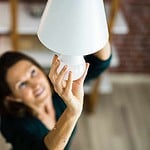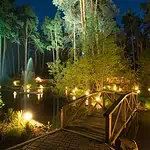Swimming pools and spas are perfect for relaxation and fun in hot summers. Many pool owners worry about the safety of pool lighting. LED pool lights, connected to a transformer, are energy-efficient, low-voltage, and safe. They use less energy than incandescent or halogen bulbs, saving money and reducing electrical hazards. LED lights, usually at 12 volts, are safer than higher voltage options when connected through wires to a circuit breaker. They also produce minimal heat, lowering the risk of burns or damage.
Assessing the Safety of LED Pool Lights
Electrical Safety: Installation and Maintenance Matters
First and foremost, proper installation of LED pool lights, including the bulb and wires, is crucial to ensure the safety of swimmers. Certified electricians should always handle the installation process, as they possess the necessary skills and knowledge to adhere to safety regulations and work with transformers. Regular maintenance checks are also essential in preventing electrical hazards in the swimming pool area. It’s worth noting that LED pool lights operate at low voltage, typically around 12 volts, significantly reducing the risk of electrocution compared to traditional lighting options.
Heat Output: Keeping Things Cool
One significant advantage of LED swimming pool lights is their minimal heat output and low voltage lighting. Unlike traditional incandescent or halogen bulbs, LEDs produce very little heat due to their energy-efficient design, ensuring electrical safety. This keeps the water temperature more comfortable for swimmers and reduces potential risks associated with overheating or burns from touching hot surfaces. Moreover, lower heat emission and electric current mean less wear and tear on surrounding fixtures, contributing to a safer overall environment with reduced line voltage concerns.
Durability and Longevity: Built to Last
LED pool lights boast an impressive lifespan that outlasts conventional bulb lighting solutions by a considerable margin. This longevity minimizes the need for frequent replacements, reducing potential safety hazards associated with faulty electrical systems or improper installation during maintenance procedures. Furthermore, LED pool lights are specifically designed for wet environments and typically feature waterproof casings that protect against water damage – another factor contributing to their durability and overall safety. Additionally, these lights have efficient heat dissipation properties, ensuring they remain calm and safe even when operating at line voltage.
Eco-friendliness: Lighting Up Responsibly
A key aspect of assessing the safety of LED pool lights is considering their environmental impact and heat dissipation. These energy-efficient, low-voltage lighting options consume far less electricity than traditional line voltage alternatives such as incandescent or halogen bulbs – up to 80% less sometimes! By choosing LEDs for your swimming pool area, you’re enjoying a safer experience due to reduced electrical hazards and lower volts and contributing positively towards a more sustainable future.
Are Pool Lights Safe?
So, are LED pool lights safe? The evidence suggests that they are superior to traditional lighting options. With proper installation and maintenance, electrical safety, low heat output, impressive durability, and eco-friendly credentials, LED pool lights offer a safer and more enjoyable swimming experience. By following safety tips and ensuring that electrical systems and transformers are in good working order, you can further enhance the safety of your pool environment.
However, it’s essential to remember that safety is not solely determined by the type of light used – factors such as regular maintenance checks, adherence to local regulations, professional installation, and proper electrical systems also play significant roles in ensuring a secure environment for swimmers. By taking these aspects into account alongside the benefits of low-voltage LED pool lights and using a transformer, you can create a swimming space that is both safe and inviting with voltage lighting.
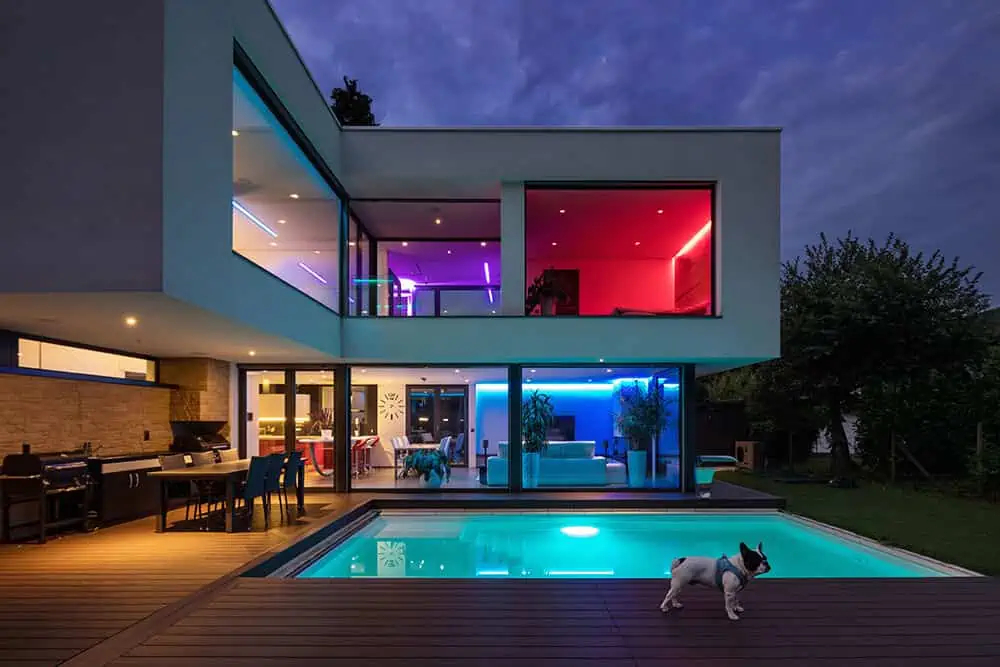
Understanding the Risk of Electrocution from Pool Lights
Strict Adherence to National Electrical Code
Swimming pool and spa lights are popular features that add ambiance and safety to any pool. However, following the National Electrical Code (NEC) when installing and maintaining these lights, including their wires and bonding, is crucial. The NEC sets strict guidelines for swimming pool lighting installations, ensuring they are safe for swimmers and minimizing the risk of high-voltage electrocution. Adhering to these regulations allows you to enjoy your illuminated pool without worrying about potential hazards.
One essential aspect of complying with the NEC is hiring a licensed electrician who understands the code requirements for wires, voltage lighting, and voltage lights. This professional will ensure that all electrical components are installed correctly and safely, reducing the likelihood of accidents or malfunctions while following safety tips.
The Danger of Faulty Wiring in Pool Lights
A significant concern with swimming pool lighting, particularly underwater and low voltage lights, is faulty wiring, which can lead to dangerous electrical currents in the water. When wires are damaged or not correctly connected, electricity can leak into the water, posing a serious threat to swimmers. In some cases, this has resulted in severe injuries or fatalities due to electric shock, similar to the dangers associated with street lights.
To prevent such incidents, having your swimming pool and spa lights inspected regularly by a licensed electrician who can identify and repair any issues with low-voltage lighting, wires, or connections is crucial. Using waterproof fixtures explicitly designed for underwater use can help minimize potential risks associated with faulty wiring.
LED Pool Lights: A Safer Alternative
Traditional line voltage lights and their associated wires pose higher electrocution risks than low-voltage options like LED pool and spa lights. LEDs operate on lower voltages than their counterparts – typically 12 volts instead of 120 volts – which significantly reduces the risk of electric shock if something goes wrong, especially when proper bonding is in place.
Moreover, low-voltage LED lights to consume less energy and have longer lifespans than traditional high-voltage bulbs, making them eco-friendly for illuminating your swimming pool area with voltage lighting. So not only do LED pool lights offer enhanced safety features due to reduced wires, but they also provide cost savings over time due to reduced energy consumption and maintenance requirements.
Regular Inspection and Maintenance by a Licensed Electrician
Ensuring electrical safety in swimming pools goes beyond simply installing the correct type of underwater and voltage lights. Regular inspection and maintenance by a licensed electrician are essential to keep your pool area safe from potential hazards, such as street lights and wires. This professional will check for any signs of wear, damage, or malfunction in the electrical system and make necessary repairs or replacements.
Scheduling routine inspections can help you catch issues before they escalate into more severe problems that could pose risks to swimmers. It’s recommended to have your pool lights, wires, and low-voltage and high-voltage systems inspected at least once every three years. Still, more frequent examinations may be necessary if you notice any signs of trouble or if your pool is heavily used.
Proper Grounding and Bonding: The Key to Electrical Safety
Grounding and bonding are crucial in preventing electric shocks from pool lights. Using a wire, Grounding ensures that any stray electrical currents are directed safely away from swimmers. At the same time, bonding connects all metal components within the pool area to create an equal potential between them. This prevents dangerous voltage gradients that can lead to electric shock.
A licensed electrician will ensure proper grounding and bonding during installation and inspect these connections during routine maintenance visits. By following these guidelines and taking appropriate precautions, you can enjoy the beauty and functionality of swimming pool lights without compromising safety.
Importance of Professional Installation and Choosing a Supplier
The Importance of Professional Installation
Safety and longevity are paramount. Professional installation is a critical aspect that ensures proper use of low-voltage equipment and quality components, increasing the service life of these LED pool lighting systems. Industry professionals possess the knowledge and expertise to correctly install low-voltage LED pool lights, minimizing potential hazards such as electrical shorts or water leaks.
For instance, experts know the importance of using appropriate waterproof connectors and seals when installing underwater lights, such as LED pool lights and low-voltage lights. These measures prevent water from entering the light fixture and causing damage or even dangerous electrical shocks. Professionals can ensure that all wiring for street and other voltage lights is safely routed through conduits, reducing the risk of accidents due to exposed wires. You invest in peace of mind and long-lasting performance by trusting a skilled professional with your LED pool light installation.
Selecting a Reputable Supplier for Quality Products
It’s no secret that good quality pool light products make all the difference in long-lasting illumination in your swimming area, preventing faulty pool issues and outshining street lights and voltage lights.
A trustworthy supplier of swimming pool lighting will provide products made from high-quality materials designed specifically for use in aquatic environments. For example, LED swimming pool lights should be UV-resistant to prevent degradation over time due to sun exposure. Moreover, reputable suppliers often offer warranties on their low-voltage mornings, giving you added confidence in their durability and performance.
By thoroughly researching low-voltage LED pool light suppliers before making a purchase decision, you’ll be better equipped to find one who consistently delivers excellent quality products that contribute significantly to the safety and longevity of your LED pool lights.
Industry Expertise: The Key Difference Maker
Incorporating low-voltage LED pool lights into your swimming area adds visual appeal and enhances safety by improving visibility during nighttime swims. However, achieving this balance between aesthetics and practicality requires careful consideration of various factors such as conduit selection, power transformer sizing, and proper installation support. This is where industry experts play a crucial role in ensuring the safety and longevity of your low-voltage lighting system.
Experienced professionals understand the importance of using a suitable low-voltage conduit for your pool setup, considering factors like water depth and fixture placement. They can recommend appropriate power transformers based on the total wattage of your LED pool lights, ensuring efficient energy use and preventing potential overloading issues.
Furthermore, industry experts provide invaluable support throughout the installation process of low-voltage LED pool lights by troubleshooting any issues that may arise and offering guidance on maintaining your LED pool lights for optimal performance over time. By enlisting the help of these knowledgeable professionals, you’re investing not only in top-quality products but also in a safe and long-lasting lighting solution for your swimming area.
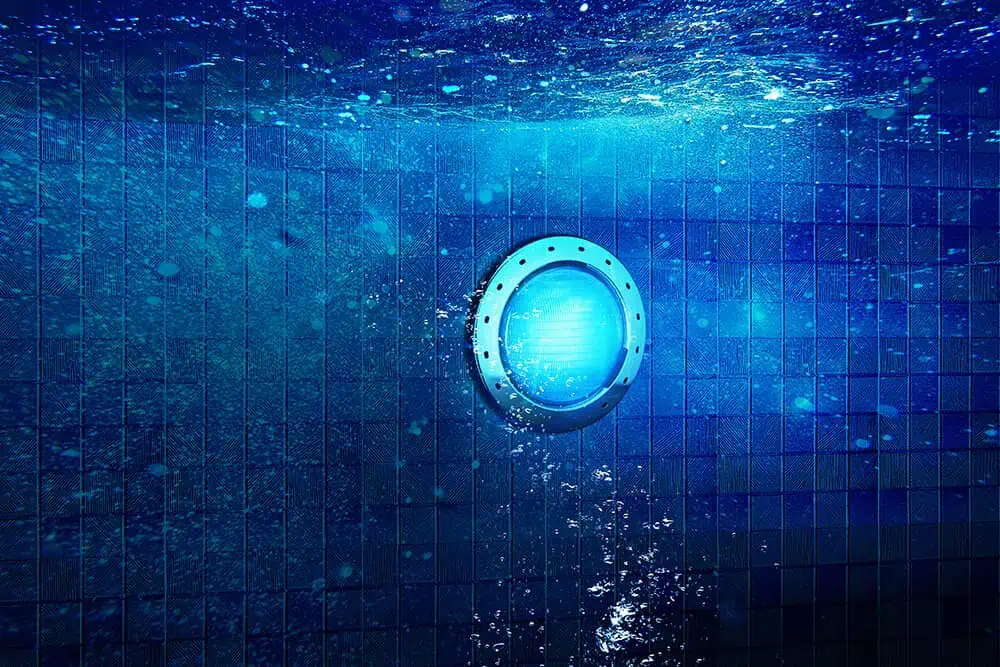
Types of LED Underwater Lights and Their Benefits
Dive into LED Underwater Light Variety
Swimming pools can be transformed into a mesmerizing oases with the right underwater pool lights. LED technology offers a variety of options for your watery paradise, including surface-mounted, flush-mounted, and even floating lights. With these diverse choices, you can create a unique and captivating ambiance that suits your style and enhances the overall aesthetic of your pool area. So whether you’re going for an enchanting glow or a vibrant party atmosphere, there’s an LED underwater light design.
Save Money and Mother Earth with Energy Efficiency
Who doesn’t love saving money while also helping the environment? That’s precisely what you get when you choose LED underwater pool lights over traditional halogen or incandescent bulbs. These energy-efficient marvels consume significantly less power, which means lower electricity bills for you and less strain on our planet’s resources. Their longer lifespan means fewer replacements are needed over time – another win-win situation! So go ahead and switch to LED underwater lights; your wallet and Mother Earth will thank you.
Built to Last: Waterproof Durability
Durability is key. Waterproof, low-voltage LED pool lights are designed to withstand harsh underwater conditions such as constant water exposure and various chemicals in pools. This makes them ideal for long-lasting performance without compromising quality or brightness. Say goodbye to frequent maintenance or replacement hassles – these sturdy little gems are built to last so that you can enjoy their illuminating presence night after night.
Safety First: Keepin’ it Cool with LEDs
No one wants their relaxing swim interrupted by burns or accidents caused by overheated lights. Luckily, underwater LED lights generate minimal heat compared to their traditional counterparts, like halogen or incandescent bulbs. This reduces the risk of injury and ensures that your swimming experience remains safe and enjoyable. Plus, the low heat output of LED lights means less wear and tear on your pool’s structure and liner, further extending their lifespan. So go ahead and take a dip without worry – LED underwater pool lights have your back regarding safety.
Tips for Ensuring Safety in Installation and Usage
Stick to Industry Standards for Installation
First and foremost, it’s crucial to follow industry standards when installing LED pool lights. This means ensuring proper wiring, grounding, and adherence to safety guidelines during installation. For example, using a certified electrician with experience in pool lighting installations can significantly reduce the risk of accidents or malfunctions down the line. Moreover, always consult the manufacturer’s instructions for your specific LED pool light model before beginning work.
Keep Cable Runs and Junction Boxes Up to Par
Another essential aspect of ensuring LED pool light safety is using appropriate cable runs and junction boxes. This includes maintaining correct cable lengths according to manufacturer recommendations and using standard junction boxes for secure connections. Sometimes, you may need to install additional junction boxes if your current setup doesn’t meet these requirements. Following these guidelines, you can minimize risks associated with faulty wiring or loose connections that could lead to potential hazards.
Illuminate Your Pool Properly While Managing Heat Output
LED pool lights come in various brightness levels and color options, so balancing adequate visibility and heat management is essential. Choose low-voltage LED pool lights that provide sufficient illumination without generating excessive heat output. Extreme heat can not only cause damage to the light fixture itself but also create potential hazards for swimmers who accidentally touch the light while swimming.
- Consider installing multiple lower-wattage swimming pool lighting options instead of one high-wattage light source.
- Opt for fixtures explicitly designed for underwater use
- Look for energy-efficient, low voltage models that produce less heat overall, such as voltage light LED swimming pool lights
Schedule Regular Inspections and Maintenance
Finally, remember ongoing maintenance! Contact a professional electrician or pool technician for routine checks on low voltage wiring, grounding, and overall functionality of your LED pool lights. This should include the following:
- Inspect all cables, connections, and led swimming pool lights for signs of wear, damage, or low voltage issues with the voltage light.
- Ensuring grounding components are functioning correctly
- Checking that all seals are intact on underwater fixtures
- Testing the lights to ensure they’re operating at optimal performance
By staying on top of these routine inspections, including checking your led swimming pool lights, you can catch potential issues before they become serious safety hazards.
Preventing Electrocution in Pools: Causes and Solutions
Dangers Lurking in the Depths: Electrocution Causes in Pools
Swimming pools are supposed to be a source of relaxation and fun, but there’s a hidden danger lurking beneath the surface: electrocution. Faulty electrical systems, stray currents, inadequate pool maintenance, and even pool light issues can all contribute to this potentially deadly hazard. Pool owners and operators must understand these risks and take appropriate measures to prevent them.
Faulty electrical systems, including pool lights, are a significant cause of electrocution in swimming pools. Often, these issues stem from improper installation or outdated equipment. Stray current is another risk factor; it occurs when electricity escapes from its intended path and flows through water or other conductive materials. Finally, inadequate pool maintenance can also lead to electrical hazards; failing to inspect and repair equipment, such as lights regularly, can result in dangerous conditions for swimmers.
Life-Saving Devices: The Power of Ground Fault Circuit Interrupters
To help protect swimmers from electrocution, ground fault circuit interrupters (GFCIs) are an essential piece of safety equipment for any pool or spa, especially when incorporating light features. These devices work by monitoring the flow of electricity through a circuit; if they detect an imbalance that could indicate a fault (such as electricity flowing through water or light fixtures), they immediately cut off power to prevent injury.
GFCIs are particularly important for protecting swimmers from stray current-related electrocutions, especially when pool light is involved. By cutting off power at the first sign of trouble, these devices provide a critical layer of protection against one of the most common causes of pool-related accidents.
Keeping Things Shipshape: The Importance of Regular Pool Maintenance
Regular pool maintenance is essential for keeping your swimming area clean and inviting and ensuring the safety of those who use it. Proper upkeep, including checking the pool light, helps prevent electrical hazards by allowing you to identify potential issues before they become serious problems.
Routine inspections should include checking all electrical connections, looking for signs of wear or corrosion on wiring and equipment, and testing pool lights for proper function. It’s essential to keep the water chemistry balanced and maintain appropriate water levels to reduce the risk of electrocution.
Prevention is Key: Solutions for a Safer Swim
Several steps can be taken to minimize risks. First and foremost, proper installation of electrical systems, including light fixtures, is crucial; this includes using certified electricians experienced working with pools and spas.
Circuit breakers should also protect against overloads or short circuits that could lead to dangerous conditions. Regularly inspecting pool equipment – such as pumps, filters, heaters, and lighting – can help identify potential issues before they become hazards.
The Safety of LED Pool Lights and Best Practices
LED Pool Lights: A Safer Alternative
Swimming pool owners have long been concerned about the safety of their underwater lighting systems. LED pool lights offer a safer alternative to traditional incandescent bulbs due to their lower heat output and energy consumption. Unlike incandescent bulbs, which generate significant heat and can pose a burn risk if touched, LED lights produce minimal heat, making them less likely to cause injury. Moreover, LED lights are more cost-effective and environmentally friendly because they consume less energy than traditional bulbs.
Long Lifespan Reduces Maintenance Risks
One of the key advantages of LED pool lights is their long lifespan. Traditional incandescent bulbs typically need replacing every 1-2 years, whereas LEDs can last up to 15 years or more. This reduced need for frequent bulb replacements minimizes the risks associated with maintenance tasks such as climbing ladders or handling electrical components near water. Furthermore, this extended lifespan means fewer opportunities for accidents during routine maintenance.
Waterproof Materials Ensure Durability and Safety
LED pool lights are designed specifically for underwater use and are made from waterproof and corrosion-resistant materials that ensure a safe and durable lighting solution in aquatic environments. High-quality LED pool lights often feature sealed housings that prevent water from entering the electrical components, reducing the risk of short circuits or other hazards that could lead to injury or damage.
Proper Installation Prevents Electrical Hazards
To ensure maximum safety when using LED pool lights, installing them correctly with proper voltage and grounding measures in place is essential. This includes using transformers to convert high-voltage power sources into low-voltage electricity suitable for underwater lighting systems—typically between 12V-24V—and ensuring that all electrical connections are properly grounded according to local regulations. Taking these precautions during installation can help prevent potential electrical hazards such as shocks or electrocution.
Regular Inspection Keeps Your Pool Lighting Safe
Like any other component of your swimming pool, LED pool lights require regular inspection and maintenance to ensure continued safe operation. By periodically checking the lights for signs of wear or damage, you can detect potential issues early on before they become serious hazards. This might include inspecting the housing for cracks, checking the electrical connections for corrosion or lose wires, and testing the light’s functionality.
So, how can you make sure your pool is safe? By choosing LED pool lights over traditional incandescent bulbs and following best practices in installation and maintenance, you can minimize risks associated with underwater lighting systems. These steps will help keep your swimming environment visually appealing and secure for all users.
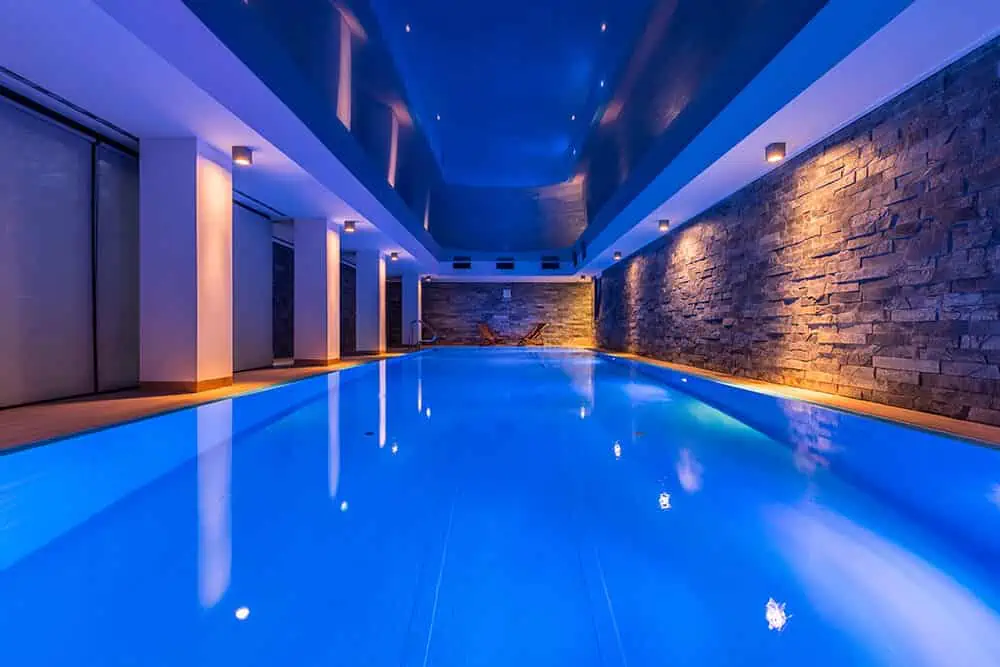
FAQs
Absolutely! LED lights used over pools are designed to be completely safe. Like a guardian angel watching over your midnight swim, these fixtures provide illumination while adhering to rigorous safety standards. They’re typically sealed units, which means they’re water-resistant and designed to handle the splashes and sprays that come with a pool environment.
Yes, you can, but should you? While LED pool lights are energy-efficient, leaving them on all night isn’t typically necessary. However, there’s no harm in it from a safety perspective. Think of it as keeping the porch light on, a comforting beacon in the darkness but not always essential.
Pool lights are like marine bioluminescence, lending a magical glow beneath the water’s surface. And yes, they are safe. Pool lights are designed to withstand being submerged in water and work at a low voltage to ensure safety. However, like anything electrical, proper installation and maintenance are key.
In a pool environment, 12-volt lights are indeed the safer option. Like small fish in a big pond, they’re efficient and effective without causing any harm. They operate at a lower voltage than traditional 120-volt lights, which reduces the risk of electrical shock.
LED pool lights are like those cool summer breezes, efficient and never overheating. Unlike traditional incandescent or halogen bulbs, they emit very little heat. This not only makes them safer but also extends their lifespan.
LED lights are your safest bet when it comes to pool lighting. Just like a lifeguard at a busy beach, they’re reliable and safe, operating at low voltages and emitting minimal heat. They also come sealed to prevent any water ingress.
LED pool lights are like the tortoise in Aesop’s fable — slow and steady. On average, they can last between 30,000 to 50,000 hours. That’s years of providing a luminous ambiance for your evening swims!
The lifespan of LED pool lights is like a well-aged wine — they really do get better with time. With an average lifespan of 30,000 to 50,000 hours, depending on usage, these lights will serve you for many years before requiring replacement.
Like investing in a good vacation, LED pool lights are absolutely worth the money. They’re energy-efficient, long-lasting, and safer than traditional lighting options. Plus, they offer a range of colors and effects to turn your pool into a mesmerizing oasis.
Yes, LED light is safe on the water. It’s like a lighthouse guiding ships — providing safe illumination without posing any hazards. LED lights are designed to be water-resistant and to function safely even in damp or wet conditions.
There isn’t a one-size-fits-all answer to this, as it’s often dictated by local building codes. Like deciding where to build a sandcastle on the beach, it’s important to check with local regulations. However, most codes stipulate a safe distance to reduce any risk of electrical accidents.
Again, the closeness of a light to a pool is subject to local regulations. It’s like setting up a picnic too close to the tide — you need to know where the safe zone
is. Always consult with a professional or your local building code to ensure the safe installation of your pool lights.
Placement of LED lights in a pool can be likened to the constellation in the night sky — strategic and beautiful. For optimal lighting, it’s recommended to place lights toward the house, if the pool is close to it, so the illumination is cast outward. However, placement will depend on the pool’s size, shape, and your personal preference.
Imagine a turtle — a creature built for both land and water. Similarly, pool lights are designed to get wet. They have special seals to prevent water ingress. However, if a light is not correctly sealed and water seeps in, it could cause a short circuit. Regular maintenance and checks are essential to ensure your lights remain safely sealed.
Technically, water can get behind a pool light, but don’t panic just yet. It’s like having a raincoat with a small tear — problematic only if left unattended. Pool lights are sealed to prevent water from reaching the electrical components. However, if the seal is compromised, water could get in. Regular maintenance will ensure your seals stay intact and keep the water where it belongs — outside the light.
Whether or not to leave your pool lights on overnight is a question of need versus efficiency. Like leaving a lamp on in an empty room, it might be comforting but isn’t always necessary. While there’s no harm in leaving them on — as long as they’re LED and energy-efficient — it could contribute to unnecessary energy usage. A light sensor or timer could be a good compromise for safety and efficiency.
Conclusion: The Safety of LED Pool Lights
LED pool lights are a safe and energy-efficient way to light up swimming pools. They use low voltage and have safety features like transformers and GFCIs to minimize electrocution risks. Choose reliable suppliers and professional installation services that follow industry standards to ensure safety. Avoid DIY installations to prevent compromising safety.
